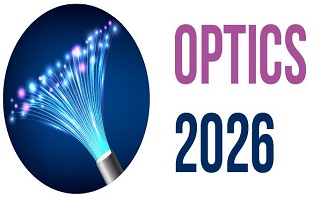3rd International Conference on
Optics and Laser Technology
October 29-30, 2026 | Berlin, Germany

Optics 2026

DDU Gorakhpur University, India
Abstract:
Fiber
optic communication is renowned for its ability to transmit signals at higher
frequencies, boasting greater bit rates and larger data capacity compared to
copper wire electrical communication. Additionally, it provides enhanced
security over long distances, with lower loss and interference. However,
various factors are impacting optical fiber transmission performance, such as
group velocity dispersion (GVD), attenuation, and nonlinearity including
self-phase modulation (SPM), must be considered. Therefore, the concept of
"Optical Soliton Transmission," which mitigates dispersive effects,
presents a compelling solution. This proposition holds promise for achieving
fast and stable optical communication in long-haul systems. Soliton pulses
constitute signals capable of traversing extensive distances without
experiencing distortion due to fiber nonlinearities. This study delves into the
comparative analysis of fiber performance between soliton and non-soliton based
fibers. The simulation explores the impacts of group velocity dispersion (GVD),
self-phase modulation (SPM), optical soliton formation, and fiber loss. The
findings from eye diagram analysis and bit error rate analysis conducted using
Optisystem-18 software reveal that fiber systems utilizing solitons exhibit
minimal distortion, while non-soliton fiber systems demonstrate noise within
the system. This study emphasizes the importance of achieving a balance between
group velocity dispersion (GVD) and self-phase modulation (SPM) to generate
solitons capable of traversing long distances without distortion. Furthermore,
it is observed that the reduction in soliton amplitude is influenced by fiber
loss, with this signal decay amplifying over propagation distance.
Biography:
coming soon..
